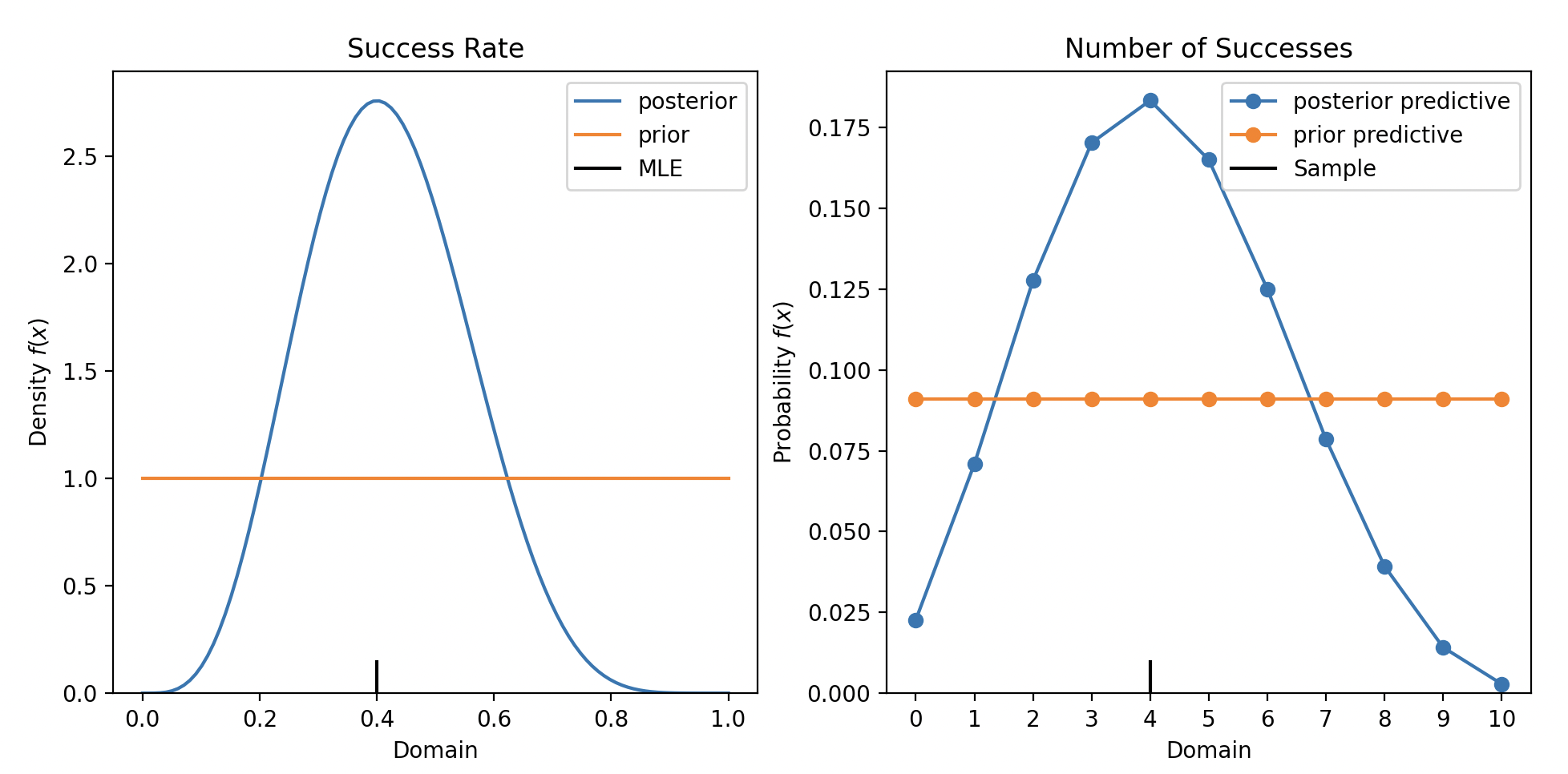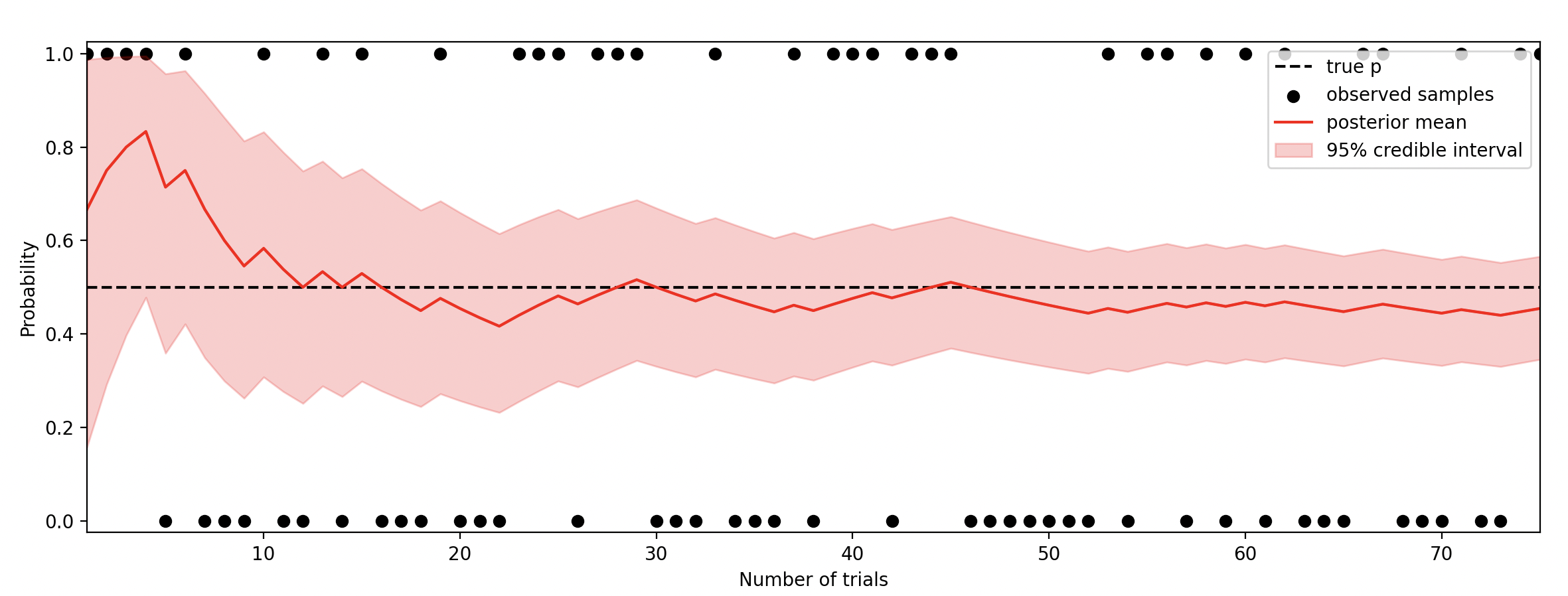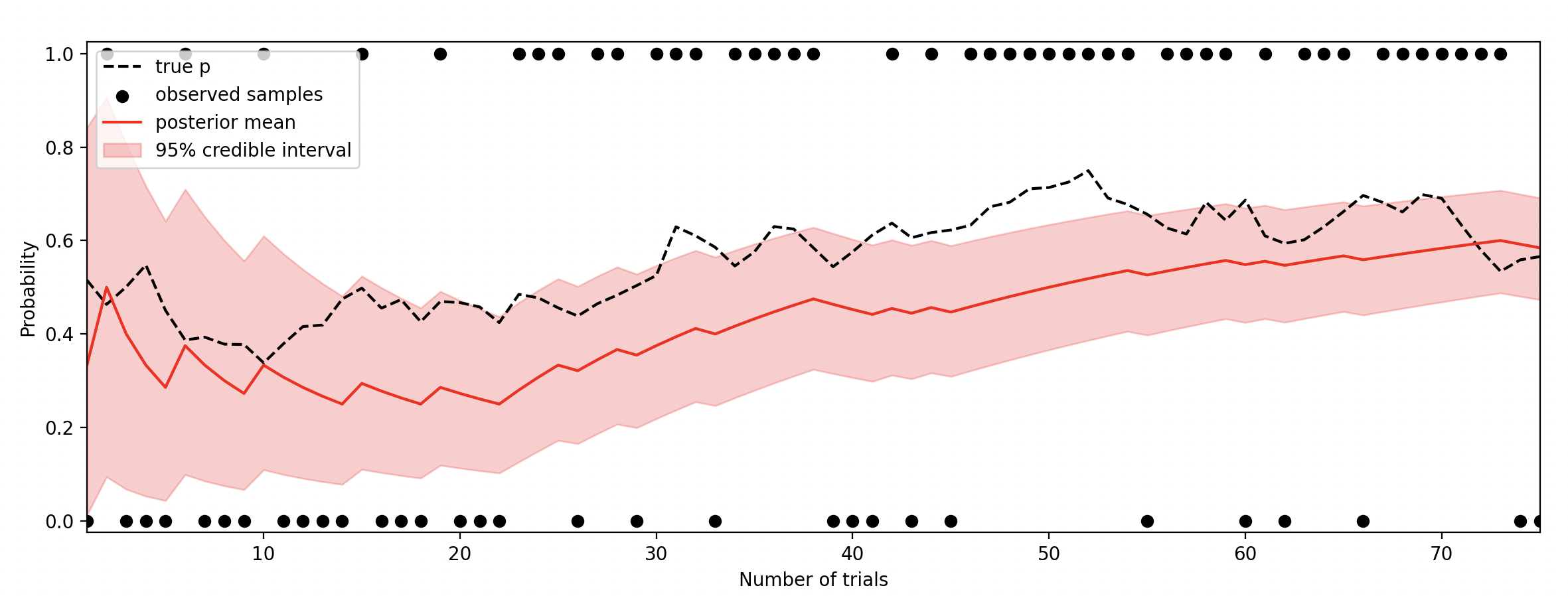Conjugate Models
Bayesian conjugate models in Python
Installation
Features
- Connection to Scipy Distributions with
distattribute - Built in Plotting with
plot_pdfandplot_pmfmethods - Vectorized Operations for parameters and data
- Indexing Parameters for subsetting and slicing
- Generalized Numerical Inputs for inputs other than builtins and numpy arrays
- Unsupported Distributions for sampling from unsupported distributions
Supported Models
Many likelihoods are supported including
Bernoulli/BinomialCategorical/MultinomialPoissonNormal(including linear regression)- and many more
Basic Usage
- Define prior distribution from
distributionsmodule - Pass data and prior into model from
modelsmodules - Analytics with posterior and posterior predictive distributions
from conjugate.distributions import Beta, BetaBinomial
from conjugate.models import binomial_beta, binomial_beta_posterior_predictive
# Observed Data
X = 4
N = 10
# Analytics
prior = Beta(1, 1)
prior_predictive: BetaBinomial = binomial_beta_posterior_predictive(n=N, beta=prior)
posterior: Beta = binomial_beta(n=N, x=X, beta_prior=prior)
posterior_predictive: BetaBinomial = binomial_beta_posterior_predictive(n=N, beta=posterior)
From here, do any analysis you'd like!
# Figure
import matplotlib.pyplot as plt
fig, axes = plt.subplots(ncols=2)
ax = axes[0]
ax = posterior.plot_pdf(ax=ax, label="posterior")
prior.plot_pdf(ax=ax, label="prior")
ax.axvline(x=X/N, color="black", ymax=0.05, label="MLE")
ax.set_title("Success Rate")
ax.legend()
ax = axes[1]
posterior_predictive.plot_pmf(ax=ax, label="posterior predictive")
prior_predictive.plot_pmf(ax=ax, label="prior predictive")
ax.axvline(x=X, color="black", ymax=0.05, label="Sample")
ax.set_title("Number of Successes")
ax.legend()
plt.show()

Too Simple?
Simple model, sure. Useful model, potentially.
Constant probability of success, p, for n trials.
rng = np.random.default_rng(42)
# Observed Data
n_times = 75
p = np.repeat(0.5, n_times)
samples = rng.binomial(n=1, p=p, size=n_times)
# Model
n = np.arange(n_times) + 1
prior = Beta(alpha=1, beta=1)
posterior = binomial_beta(n=n, x=samples.cumsum(), beta_prior=prior)
# Figure
plt.plot(n, p, color="black", label="true p", linestyle="--")
plt.scatter(n, samples, color="black", label="observed samples")
plt.plot(n, posterior.dist.mean(), color="red", label="posterior mean")
# fill between the 95% credible interval
plt.fill_between(
n,
posterior.dist.ppf(0.025),
posterior.dist.ppf(0.975),
color="red",
alpha=0.2,
label="95% credible interval",
)
padding = 0.025
plt.ylim(0 - padding, 1 + padding)
plt.xlim(1, n_times)
plt.legend(loc="best")
plt.xlabel("Number of trials")
plt.ylabel("Probability")
plt.show()

Even with a moving probability, this simple to implement model can be useful.
...
def sigmoid(x):
return 1 / (1 + np.exp(-x))
p_raw = rng.normal(loc=0, scale=0.2, size=n_times).cumsum()
p = sigmoid(p_raw)
...

